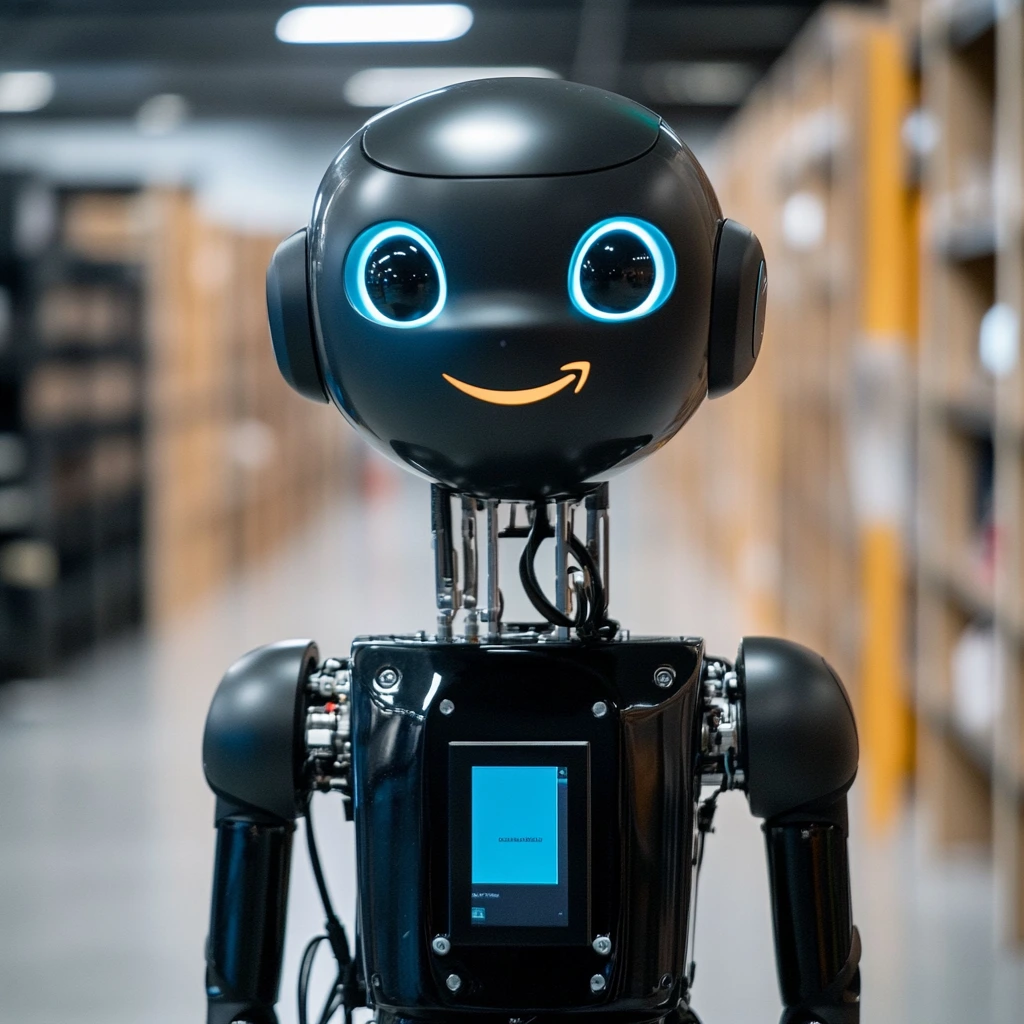Amazon, a company known for pushing the boundaries of technology and innovation, is stepping into a new frontier with its latest project — the development of humanoid robots designed to assist in package delivery. This initiative reflects Amazon’s ambitious vision to transform the logistics and delivery industry by leveraging advanced robotics. The humanoid robot project is not just about automation; it represents a strategic move to improve efficiency, cut delivery times, reduce costs, and address challenges associated with last-mile delivery, which is often the most complex and expensive part of the shipping process.
In this article, we’ll dive deep into Amazon’s humanoid robot, known as Digit, explore how the technology is being developed and tested, understand its integration into Amazon’s delivery system, and discuss the broader implications for the future of work and logistics.

What Is Amazon’s Humanoid Robot? Understanding Digit’s Design and Capabilities
Amazon’s humanoid robot, named Digit, is a state-of-the-art bipedal robot created by Agility Robotics specifically for tasks that require human-like mobility and dexterity. Unlike conventional delivery robots that often rely on wheels or tracks, Digit mimics human form and movement, standing around 5 feet 9 inches tall with arms and legs that allow it to navigate complex environments.
The robot is equipped with advanced sensors and cameras, giving it the ability to perceive its surroundings, avoid obstacles, and interact with objects in a way that resembles human actions. Digit can pick up packages, open doors, climb stairs, and traverse uneven surfaces, tasks that are often challenging for traditional robots.
This humanoid design is a game-changer because it allows the robot to operate in spaces built for humans without the need for expensive infrastructure modifications. For Amazon, this means Digit can seamlessly move through homes, apartment complexes, and office buildings to deliver packages efficiently.
Moreover, Digit’s ability to handle packages of various sizes and shapes makes it highly versatile, catering to the diverse nature of Amazon’s delivery inventory. The robot’s development highlights how robotics technology is moving beyond factory floors into real-world, everyday applications.

Testing and Development: Preparing Digit for the Real-World Delivery Challenges
Developing a humanoid robot capable of autonomous delivery is an enormous technical challenge. To meet this, Amazon has established a specialized testing facility called the “humanoid park” in San Francisco. This indoor testing ground is designed to simulate a wide range of real-world conditions that the robot might face during deliveries.
The park includes features such as stairs, ramps, curbs, doorways, and uneven terrain to test Digit’s ability to navigate and adapt. By repeatedly running through these scenarios, the robot learns to make split-second decisions, improving its balance, stability, and dexterity.
Amazon’s engineers are also focused on the robot’s safety and interaction with humans. Programming Digit to detect and respond to people, pets, and unexpected obstacles is crucial to ensuring smooth and safe deliveries. The robot’s sensors help it understand its environment and adjust its movements in real time.
This rigorous testing phase is critical for refining both the hardware and software components of the robot, ensuring it is reliable, efficient, and capable of handling the unpredictable nature of last-mile delivery.

Integration into Amazon’s Delivery Network: How Digit Will Work Alongside Electric Vans
One of the most innovative aspects of Amazon’s project is how Digit will fit into the company’s existing delivery infrastructure. The plan is to deploy Digit in conjunction with Amazon’s fleet of electric delivery vans, manufactured by Rivian.
Here’s how it’s envisioned to work: upon arriving at a customer’s neighborhood, the delivery van will stop, and Digit will “spring out” from the vehicle. The robot will then autonomously carry packages to customers’ doorsteps, deliver the items, and return to the van to continue the route.
This system aims to optimize the “last mile” of delivery — the final leg that often requires walking long distances and multiple stops, which can be time-consuming and costly for human drivers. By using Digit, Amazon hopes to increase delivery speed, reduce labor costs, and lower the environmental impact by combining electric vehicles with autonomous delivery robots.
The integration also allows human drivers to focus on driving and managing multiple deliveries without the physical burden of walking door-to-door, potentially increasing overall efficiency and job satisfaction.
The Future Impact: What Amazon’s Humanoid Robot Means for Delivery and Employment
Amazon’s investment in humanoid robots like Digit signals a profound shift in how goods will be delivered in the future. Automating last-mile delivery with robots could revolutionize the logistics industry by enabling faster deliveries and reducing operational costs.
However, this technological advancement raises important questions about its impact on employment in the delivery sector. As robots take over tasks traditionally performed by humans, there may be shifts in job roles, with some positions becoming obsolete while new opportunities in robot maintenance, programming, and supervision emerge.
The broader societal impact also includes discussions about the ethical deployment of robots, how to ensure fair labor practices, and how to prepare the workforce for an increasingly automated future.
Beyond delivery, the technology behind Digit could pave the way for robots to assist in other areas such as healthcare, retail, and emergency response, showcasing the versatile potential of humanoid robots.
Amazon’s humanoid robot project exemplifies how technology continues to reshape industries, improve operational efficiencies, and challenge us to rethink the future of work and automation.
Amazon’s journey with Digit highlights a fascinating intersection of robotics, logistics, and innovation. As these humanoid robots move closer to real-world deployment, they promise to change the way we receive packages and interact with technology — a glimpse into the future that is rapidly becoming today.

Table of Contents
Edit Post “Amazon Tariffs: Navigating the E-Commerce Landscape as of April 30, 2025” ‹ trendsfocus — WordPress